Author: |
浏览量:The laser technology has just turned 60. Once the epitome of cutting-edge technology, it is practically ubiquitous, found in almost all areas of life and work. However, it would be a big mistake to write off laser as old and out-of-date, as it is now still an essential tool used in the development of all manners of brilliant innovations.
In China, the Changchun Institute of Optics, Fine Mechanics and Physics (CIOMP) is a shrine for the development of laser technology. It is the cradle of China’s optical science community and the birthplace of China’s first ruby laser. CIOMP, a member of China Academy of Sciences, is not only a leading research centre of laser technology, but also the power behind the success of Changchun New Industries Optoeletronics Tech. Co. Ltd. (CNI), the largest manufacturer of all solid state lasers in China.
CNI laser offers state-of-the-art laser systems, optical spectrum analyzer, teaching and laboratory equipment, optical measuring equipment, laser processing equipment, machine vision and the photoelectric detection, etc. CNI also design and manufacture precision machinery, optical components and optical coating products.
CNI products are widely used by the scientific community both in China and abroad and are essential research tools in many important projects. More than 10,000 academic papers have been published on research projects which use CNI lasers, covering many academic disciplines.
Here are just a few recent examples:
01 Confocal Light Field Microscopy
The institute of Neuroscience, Chinese Academy of Sciences, presents a new imaging method, confocal light field microscopy, to enable fast volumetric imaging deep into brain. They demonstrated the power of this method by recording whole brain calcium transients in freely swimming larval zebrafish and observed behaviorally correlated activities on single neurons during its prey capture. Furthermore, they captured neural activities and circulating blood cells over a volume ? 800 μm x 150 μm at 70 Hz and up to 600 μm deep in the mice brain.
Paper title: Capturing volumetric dynamics at high speed in the brain by confocal light field microscopy
Periodical: bioRxiv, doi:https://doi.org/ 10.1101/ 2020.01.04.890624, page 23


473nm 1.5W laser for CLFM
02 Handheld Photoacoustic Imaging
With the aim of clinical translation, a photoacoustic imaging platform with a portable system size, a miniaturized imaging probe, and convenient handheld capability is of great demand.
Nanyang Technological University had an experiment by adopting an ultrathin central-holed matrix array and a compact coaxial photoacoustic design, a water-free handheld photoacoustic imager is developed (weight: 44 g). This experiment uses a 15mJ fiber coupled laser that customized by CNI, and its paper is published in IEEE Transactions on Biomedical Engineering.
Paper title: Development of a handheld volumetric photoacoustic imaging system with a central-holed 2D matrix aperture.
Periodical: IEEE Transactions on Biomedical Engineering · January 2020 DOI: 10.1109/TBME.2019.2963464, page 3

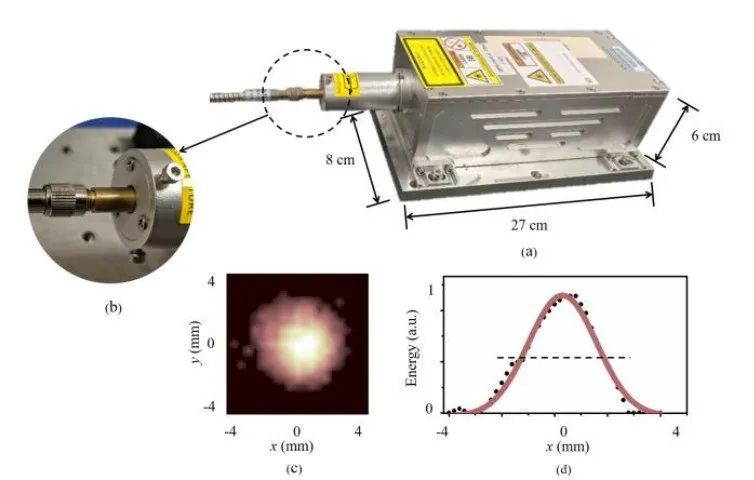
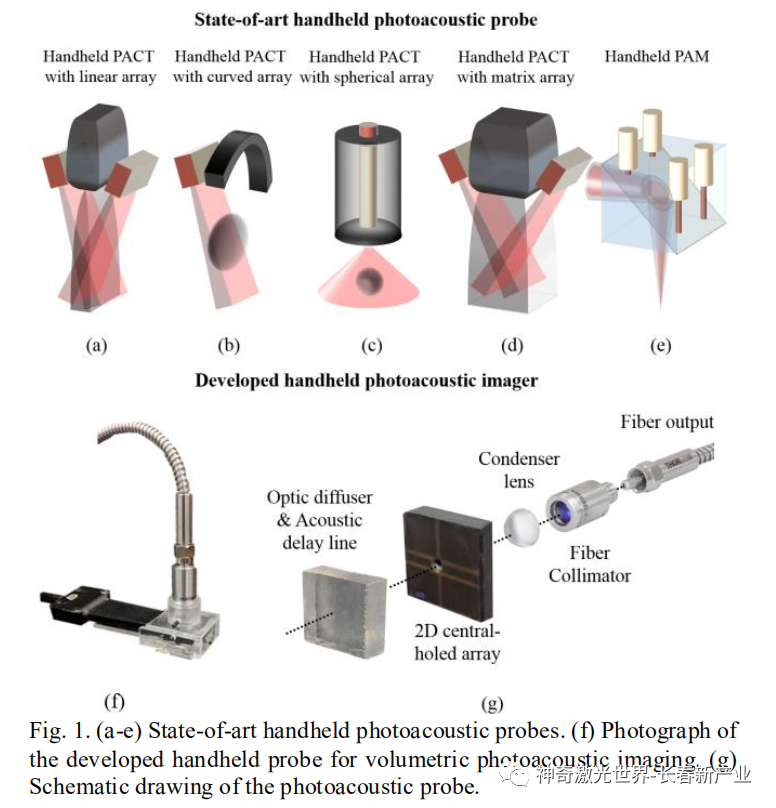
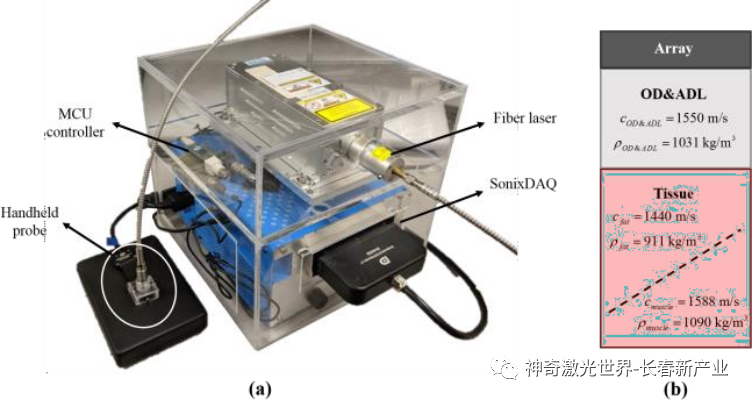

03 Photodynamic Therapy
Antimicrobial photodynamic therapy (aPDT) leads to the generation of reactive oxygen species (ROS) that destroys bacterial cells in presence of a photosensitizer, visible light, and oxygen.
Aligarh Muslim University has taken Enterococcus faEcalis and Streptococcus mutans as monospecies culture and their dualspecies culture biofilm. Antibacterial effect was evaluated by colony forming unit while antibiofilm action by crystal violet and congored binding assays. Finally they found that reactive oxygen species and singlet oxygen yield was found to be light dose dependent and antimicrobial photodynamic efficiency is directly related to the ROS production. They use a 630nm CNI laser to complete the experiment and published their paper in Photodiagnosis and Photodynamic Therapy, 2019 - Elsevier.
Paper title: Photodynamic efficacy of toluidine blue O against mono species and dual species bacterial biofilm.
Periodical: Photodiagnosis and Photodynamic Therapy, 2019 - Elsevier

04 Nitrogen-vacancy Center Detection
Electron spin resonance (ESR) spectroscopy has broad applications in physics, chemistry, and biology. However, the traditional zero-fifield ESR (ZF-ESR) method has been rarely used due to the low sensitivity and the requirement of much larger samples than conventional ESR.
The University of Science and Technology of China presents a method for deploying ZF-ESR spectroscopy at the nanoscale by using a highly sensitive quantum sensor, the nitrogen vacancy center in diamond. This method opens the door to practical applications of ZF-ESR spectroscopy, such as investigation of the structure and polarity information in spin-modifified organic and biological systems. They use a CNI 532nm laser and their paper is published in Nature Communications.
Paper title: Nanoscale zero-fifield electron spin resonance spectroscopy
Periodical: Nature Communications (2018) 9:1563 | DOI:10.1038/s41467-018-03969-4, page 2

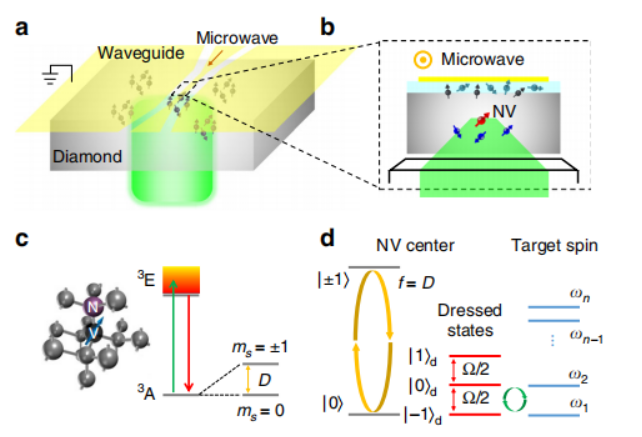
05 Synthetic Biology
Droplet microfuidics enables massively-parallel analysis of single cells, biomolecules, and chemicals, making it valuable for high-throughput screens. However, many hydrophobic analytes are soluble in carrier oils, preventing their quantitative analysis with the method.
Synthetic biologists engineer organisms to produce high-value compounds, including drugs, biofuels, and chemical building blocks. The University of California applies Printed Droplet Microfuidics to construct defined reactions with chemicals and cells incubated under air on an open array. The method interfaces with most bioanalytical tools and retainshy drophobic compounds in compartmentalized reactors, allowing their quantitation. This experiment uses a multi-line laser that contain 405nm, 473nm, 532nm and 640nm that manufactured by CNI Laser. Their paper is published in Scientific Reports.
Paper title: An Oil-Free Picodrop Bioassay Platform for Synthetic Biology.
Periodical: SCIENTIFIC REPORTS | (2018) 8:7913| DOI:10.1038/s41598-018-25577-4, page 5



06 Optical Diffraction Tomography
Korea Advanced Institute of Science and Technology presents a multimodal approach for measuring the three-dimensional (3D) refractive index (RI) and fluorescence distributions of live cells by combining optical diffraction tomography (ODT) and 3D structured illumination microscopy (SIM). A digital micromirror device is utilized to generate structured illumination patterns for both ODT and SIM, which enables fast and stable measurements. They use CNI 473nm and 532nm single frequency lasers to complete the experiment, and the paper of this research is published in Scientific Reports.
Paper title: Super-resolution three-dimensional fluorescence and optical diffraction tomography of live cells using structured illumination generated by a digital micromirror device.
Periodical: SCIENTIFIC REPORTS | (2018) 8:9183 | DOI:10.1038/s41598-018-27399-w

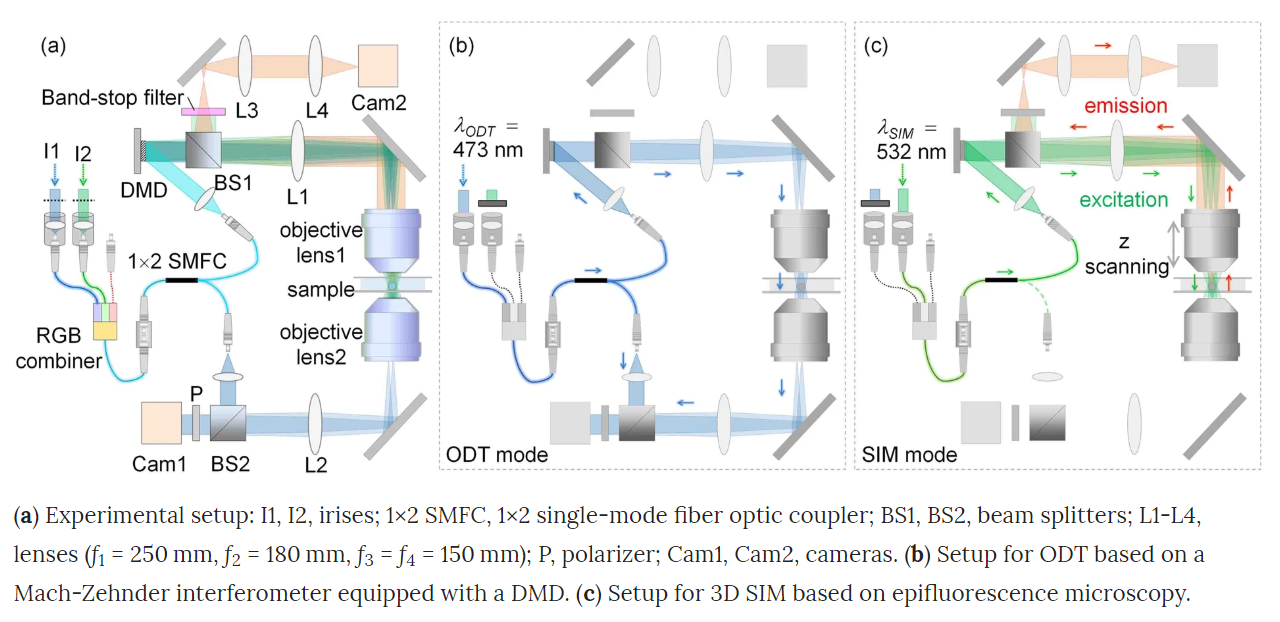
07 Optoelectronic Synaptic
In recent years, optoelectronic synaptic devices have become the application platform for next generation neuromorphic system and artificial neural network.
The key synaptic functions such as excitatory postsynaptic current (EPSC) and paired-pulse-facilitation (PPF) were successfully emulated by Human Key Laboratory of Super Microstructure and Ultrafast Process, School of Physics and Electronics, Central South University.
More importantly, by exposing an ultraviolet (360nm) laser (CNI Laser), the transformation of short-term memory (STM) to long-term memory (LTM) can be mimicked in our neuromorphic devices. These results represent an important step toward the next-generation neural networks enabled by photo-electric hybrid nano-electronics, and point to the potential of more sophisticated neuromorphic computations. Their paper is published in Solid-State Electronics, 2020 - Elsevier.
Paper title: Poly(vinyl alcohol)-gated junctionless Al-Zn-O phototransistor for photonic and electric hybrid neuromorphic computation.
Periodical: Solid-State Electronics, 2020 - Elsevier



 中文
中文

